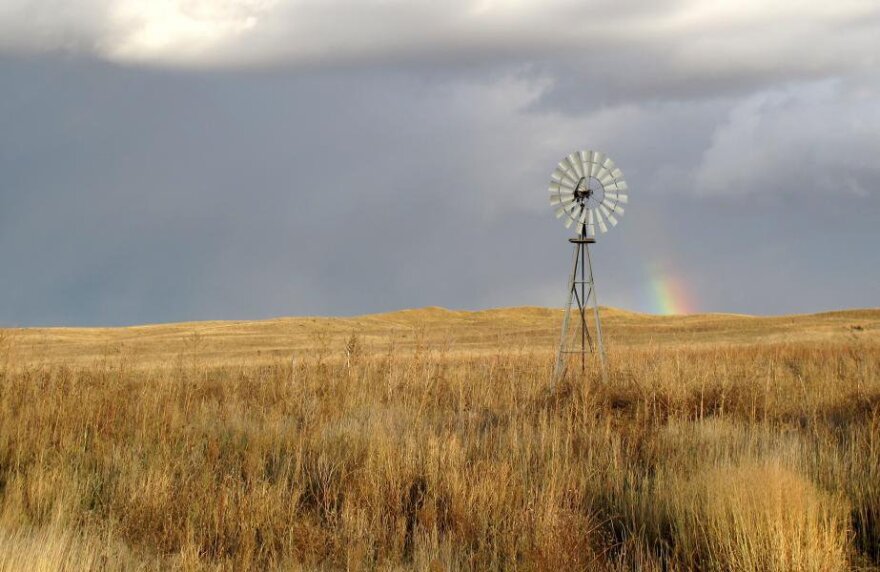Several U.S. regional climate centers shut down Thursday — including those in the Midwest, Great Plains and South.
Those three centers are responsible for collecting weather data across 21 states, as well as sharing drought conditions and other online tools. But their operations ceased at midnight on Thursday due to a lapse in federal funding, which comes from the Department of Commerce through the National Oceanic and Atmospheric Administration.
John Nielsen-Gammon is the director of the Southern Regional Climate Center, based in College Station, Texas, and covering six states, including Oklahoma. Without funding, he said their data, services and website have become unavailable.
“We've had to essentially go dark and we're waiting to hear when and if the next year contract does get approved,” said Nielsen-Gammon, the Texas state climatologist and professor at Texas A&M University.
Nielsen-Gammon said that due to additional contract review procedures in Washington, D.C., the regional climate center’s approval did not come by the time the previous year’s contract ended on April 17.
“From what we understand, we're in the pile of April contract reviews at NOAA headquarters and they've almost made it down to us,” he said.
The other centers that were shut down included the Midwestern Regional Climate Center; which covers nine states; the High Plains Regional Climate Center, covering six states; and the Southeastern Regional Climate Center, which covers six states and two U.S. territories.

For Matthew Sittel, the assistant state climatologist at Kansas State University, it’s been a “blow to the community.” Sittel said he relies on both the Southern and Midwestern regional climate centers for their drought monitoring and historical temperature data.
“To suddenly say, ‘We can't adequately assess the drought situation anymore’ because we've lost the data that we look at weekly to make these assessments, that's unacceptable,” Sittel said.
While Nielsen-Gammon said he’s hopeful to get up and running again, the closures come amid ongoing cuts to other federal programs, as well as a recent report that the Trump administration would propose a 25% cut to NOAA’s budget next fiscal year.
Sittel, on the other hand, said he’s worried the regional climate centers and their resources won’t return — including the two remaining in the West and Northeast, which have a funding deadline of June 17.
“It’s tough,” he said. “Do we lose these products for a week, for a month, for a year, forever? Nobody knows.”
Far-reaching effects
Many of the people who rely on the regional climate centers are researchers and other scientists, but farmers and ranchers depend on it too, according to Missouri State Climatologist Zachary Leasor.
He said the Midwestern center has a vegetation impact planning program, a tool designed to share crucial information like freeze dates and growing degree days. Now he worries for the producers who are getting ready for the upcoming growing season.
“I think the impacts are going to be pretty widespread. The weather data is still out there, but it's just going to get that much harder to access at this point,” said Leasor.
Illinois State Climatologist Trent Ford said that everything from health care systems, warning systems and even transportation systems all benefit from the resources provided by the regional climate centers.
“The fact that we take those things for granted is unfortunate, but all of those systems rely on information,” Ford said. “We're still going to need that information to prepare, so it's just making us all less effective and less safe, to be honest.”
Although much of the weather data can still be found, it’s going to become much harder to do so, according to Eric Hunt, the assistant extension educator of agricultural meteorology at the University of Nebraska in Lincoln.
“This is your taxpayer money that you're not getting full benefit of right now,” Hunt said.
One of Hunt’s biggest concerns is the future of drought monitoring and seasonal outlooks, particularly as states like his battle ongoing drought. He said it could become more challenging to accurately classify drought categorizations, which could have an impact on aid to farmers and ranchers.
“There's a lot of things that could be at risk here if things aren't changed or negated,” he said.
For now, it’s likely that agricultural businesses will start to incur higher operating costs without the kind of climate information that would help insure them against losses, according to SRCC Director Nielsen-Gammon. Eventually, he said consumers also will feel the financial impacts.
“Ultimately, it ends up affecting people's checkbooks with higher prices for goods and services,” he said.
This story was produced in partnership with Harvest Public Media, a collaboration of public media newsrooms in the Midwest. It reports on food systems, agriculture and rural issues.






